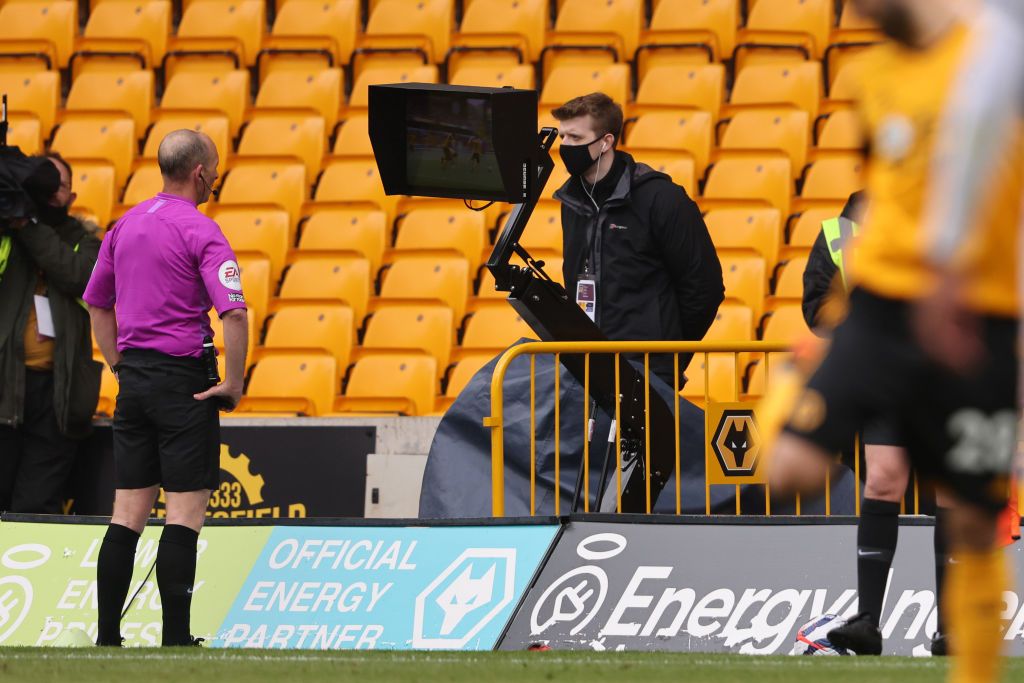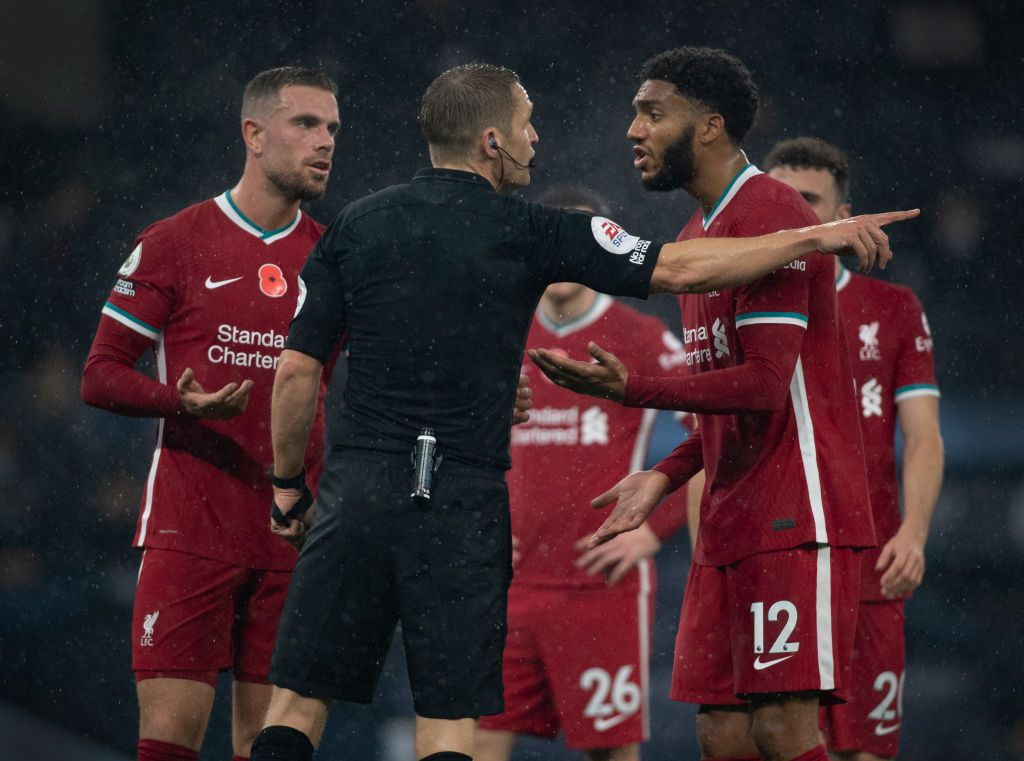VAR is getting a sensitivity tweak
After yet another year of controversial decisions and marginal miscalls, a number of new changes to VAR rules are set to be implemented in the Premier League this season.
The updated rules and regulations come after referee chief, Mike Riley, said that interference for the video assistant referee needs to be “dialled back” so as to avoid officials penalising players for “trivial things”.
Players will be given the benefit of the doubt as goals won't be ruled out for offside due to toenails and noses this season, referee chief Mike Riley has said.
— Sky Sports Premier League (@SkySportsPL) August 3, 2021
Under the revised regulations, referees will be under orders not to give the kind of penalty that Raheem Sterling was awarded in England’s semi-final win over Denmark in Euro 2020. Sorry to bring it up again but it was the example used by Riley. A record 125 penalties were awarded in the Prem last season – staggering, really.
He went on to say that “Contact on its own is only part of the what referees should look for. They should also ask themselves if the contact has a consequence, and then if the player used that contact to try and win a foul or a penalty.
“It’s not sufficient just to say: ‘Yes, there’s contact.’ I think, partly, we got into that frame of mind by the forensic analysis that went into VAR awards.
“If you’ve got clear contact that has a consequence, that’s what you’ve got to penalise. If you’ve any doubt in those elements, you’re less likely to be penalised. “I think it moves the dial back towards where we were in a pre-VAR world. We don’t want trivial things penalised.”
Still a work in progress
Basically, it looks as the officials are going to be using their common sense and adjudicate based on things such as a player’s intentions when going down in the box, as they should – i.e. ‘is he looking for it?’. Nevertheless, this is just one of many rule changes being brought in for the 21/22 season, including the already announced use of thicker line for offside calls.
This is now the third season we’ve had VAR in the Premier League full-time and while we knew it would have some teething problems at first, to call it a work in progress after last season would be putting it mildly.
In 20/21, a number of changes were brought in to encourage referees to consult the pitchside monitors more, for assistant referees being to keep their offside flags down until the phase of play has ended; making sure goalkeepers stayed on their line during penalties and an adjustment to what counts as offside. Is it an arm, a sleeve, a toenail? Who knows?
The point being, all these changes seemed to do was add more confusion into the mix and undermine other decisions for the season prior, not to mention continuing to hamper the celebrations after goals. All players do now is look straight to the linesman to check if it’s worth getting excited or not.
Admittedly, Riley – who is the general manager of Professional Game Match Officials Limited (PGMOL) – says he always felt it would be a “three-to-five year project” for VAR to fully bed in, claiming that the likes of cricket and rugby took seven years to get to what he calls “a good place” with it.
So, what exactly is new for VAR in 21/22?
However, one element from the summer will be introduced.
What’s new for 2021-2022?
Drawing the lines
Well, beyond the added subtleties surrounding penalties, another big change is that the tortuous and long-winded process of lines being drawn on screens as VAR makes an offside decision will no longer be visible. Instead, like at the Euros, viewers will only be shown how the conclusion was reached.
Handball rules
Another hugely controversial area all last season, regulations around handball are also going to be tweaked, judging mainly on:
- What is the hand or arm position in relation to body movement?
- Is the body being made unnaturally bigger?
And as for accidental handball (a few of which have been given of late):
- It is an offence if an attacker scores directly or immediately after the ball touches a hand or arm.
The intricacies of this on a case-by-case basis will, no doubt, end up a lot more complicated than it sounds on paper; IFAB announced that accidental handballs leading to teammates scoring will no longer be an offence, but there’s still be plenty of room for subjectivity and debate at both ends, we’re sure.
For offsides:
- The benefit of the doubt for attacking sides is now restored.
In short, referees if you’re level, you’re on and referees will try and rule in favour of the attacker where necessary. Nobody wants perfectly good goals to be ruled out; Riley remarked that “The toenails and noses that might have been offside last year won’t be next season,” estimating that at least 20 goals were disallowed last season after “quite forensic scrutiny”. Quite?
He went on to add: “We will carry on following the same process as last year, so you’ll apply the pixel lines, place the attacking line and defending line on top, and then the thicker broadcast lines. But where they overlap those, situations will now be deemed as onside.”
This now means that assistant referees have also been given greater scope to flag for clear offsides immediately, rather than delaying in case they are wrong, as became so tiresome last year.
There had even been talk of ‘semi-automated’ VAR for offside (think one step ahead from goal-line technology and Hawk-Eye in tennis) – a method which Riley believes which would reduce the decision time from an average of 34 seconds to five.
However, such systems have not yet been fully trialled and may struggle in packed penalty areas, so this isn’t likely to be discussed again until the 2022-23 season.




































